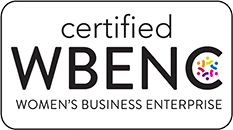Long lunch lines are often a struggle for K-12 schools. Short lunch periods and hundreds…
Rise Above the Rest: Unlocking the Potential of Vertical Serving Options

As any foodservice operator knows, space is at a premium in a servery. With counters, equipment, and space for merchandising, it’s easy to run out of room for serving trays, drop-ins, and heated or cooled surfaces. But what do you do when there’s no more room at counter height? The solution lies in moving upward.
Going vertical allows operators to serve more product in the same footprint by using equipment suited for this method. This can make serving operations more efficient and, more importantly, more profitable.
Advantages of going vertical
Going vertical with foodservice merchandising or serving lines can produce a number of benefits:
- Space optimization. Vertical merchandising maximizes the use of limited space, allowing for more products or food to be displayed in a smaller area.
- Improved efficiency. Vertical merchandising allows for a more streamlined flow of customers through the cafeteria, reducing wait times and increasing overall efficiency.
- Increased visibility. By displaying products or food at different heights, vertical merchandising can improve product visibility and draw attention to specific items.
- Enhanced aesthetics. A well-designed vertical merchandising system can improve the aesthetics of the cafeteria, making it more appealing and attractive to customers.

Beauty is in the eye of the customer
A fresh vertical arrangement also creates visual appeal, making it easier to move menu offerings. Two-tiered serving possibilities enhance merchandising by placing products at eye-level of the customer. Aided by the addition of accessories such as LED lights and polished tempered glass, vertical displays will create demand and can help prioritize food items in the eyes of customers.
LTI’s two-tier QuickSwitch Glass shelves cases allow operators to convert from a heated shelf to frost top with the flip of a switch. It is available in 28″ and 42″ heights as a single shelf or two-tier display. For instance, a frost top can be placed above a cold pan, essentially doubling the amount of display space for your selections. LTI provides a number of vertical configurations to fit your varying needs.
The benefits of this serving technology are numerous:
- Ceramic glass converts from heated to frosted surface in one hour for changing menus
- Upper and lower shelves are independently controlled
- Speckled glass surface masks scratches and provides upscale appeal
- Heat blanket technology ensures even temperature across the entire surface
- Displays can be used for both packaged or unwrapped items
ADA considerations
According to Linda S. Roth, principal of Roth Consulting Group in Lockport, New York, it is crucial to keep in mind that continuing to meet ADA requirements should be a top priority when incorporating vertical serving options. “If you are going to reduce your footprint by incorporating vertical, having a deep menu should not be your driving factor,” said Roth. “Consider how you will be increasing volume, and therefore efficiencies, while still adhering to ADA guidelines.”
ADA compliance limits either side or front reach height to 48” with or without a tray slide. A product placed on an over-shelf should also be displayed somewhere on the main counter to meet ADA requirements. “If you are going to utilize vertical serving, you need to think in terms of incorporating ‘same service’ design,” said Roth. “When a student or client cannot physically reach the over-shelf, an alternate location for the same product must be provided for a truly accessible design.”
Design for success
Whether it’s a middle school cafeteria, university dining hall, or a c-store retail setting, the use of vertical space for serving and merchandising is sure to enhance the operation of any servery. Contact the specialists at LTI for suggestions on how to implement this strategy and increase your serving space while meeting ADA requirements.




